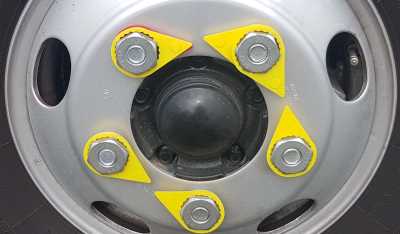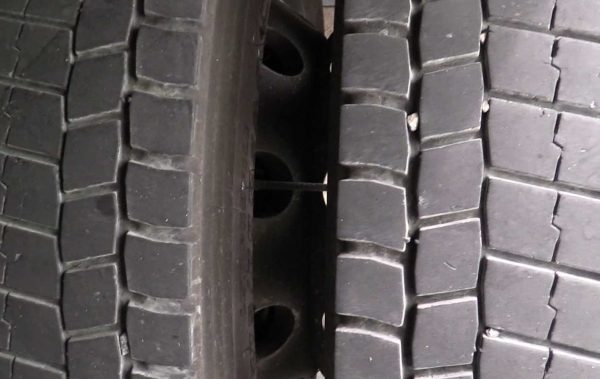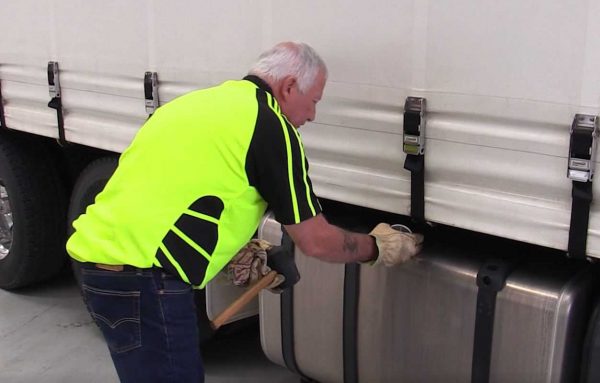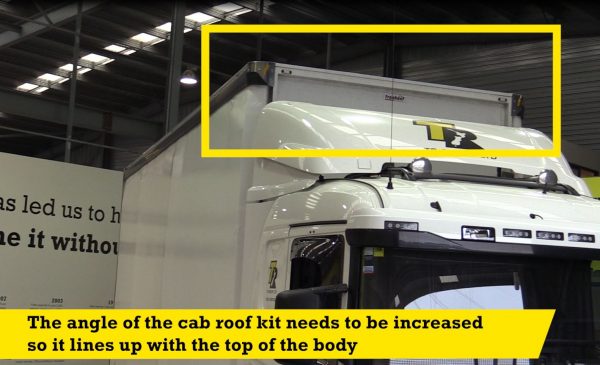The pre-drive walk around check is an important way to prevent serious issues from developing with your lorry. Drivers will usually develop a routine to ensure they don’t forget anything, for example, starting in the cab, then getting out beginning at the front driver’s side corner, going around the lorry and finishing in the same corner.
Walking towards the cab
Check that the lorry looks like it’s sitting level. Look under the front for leaking fluid. Does everything look OK with the deck and any trailer that’s connected?
Inside the cab
Mirrors and glass: are all windows and mirrors clean, with no cracks? Check that the mirrors are adjusted correctly. Test the windscreen washers and wipers. Remember to keep the washer bottle topped up.
Brakes: is there brake pressure when you depress the pedal. Make sure you check the brakes as you leave.
Front view: are there any obstructions to your view out of the windscreen?
Steering wheel: check for excessive play
Horn: test the horn
Dashboard: do all the warning lights go out after you turn on the ignition.
Lights and indicators: turn them on and check when you go outside the cab – turn headlights on low beam and indicators on to the right first and then walk right around the lorry, then turn indicators on left and headlights on full beam and walk the other way around.
Loose items should be stowed
Is the fire extinguisher still indicating green?
Outside the cab
Starting from the front:
Is the number plate clean?
Check the engine oil level, radiator coolant level, air cleaner service indicator, water level
Check belts (not while the engine is operating).
If you are towing a semitrailer, check the coupling, brake lines and electrical connections; if you’re towing a pull trailer, check these when you get to the back.
Check mudflaps and spray suppression for each wheel as you pass.

Check wheel nuts are tight. Wheel nut position indicators are a useful tool to quickly see if a wheel nut has come loose; if a red arrow is shown, the wheel nuts may need retorquing. If you don’t have wheel indicators look for lines of rust (red or black) from the nuts.
Are the tyres in good condition and pumped up? There should be no cuts or bulges in the sidewalls. Is the tread OK? Check between dual wheels for trapped rocks.

Are trailer side lights working?
Is the battery secured?
Is the fuel cap tight? Spilt diesel is extremely slippery and is a danger to other motorists

Clean the reflectors, numberplate and markers on the rear
Check load security: any lashings should be tight and any locks should be secure
Are all farings and body parts secure? Aerodynamic aids should be secure and set correctly.

Is the engine producing excessive exhaust fumes or noise?
Are there any other unexplained rattles or noises that might indicate an issue
Are there any specific checks you need to do on attached equipment?
Now walk back around the lorry the other way and check the other indicators and the high-beam headlights.
Remember when you move away to test your brakes for the tractor unit and any trailer you are towing.
It’s helpful if you have a written checklist which you can mark off.

